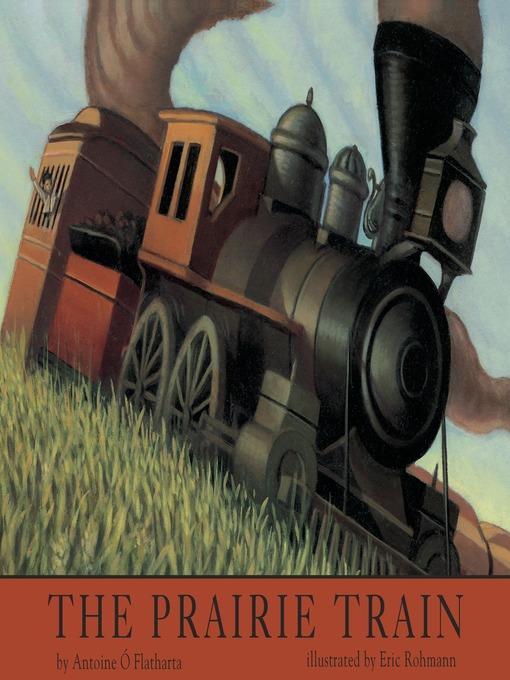
The Prairie Train
فرمت کتاب
ebook
تاریخ انتشار
2014
Lexile Score
600
Reading Level
2-3
ATOS
3.8
Interest Level
K-3(LG)
نویسنده
Eric Rohmannشابک
9780385756150
کتاب های مرتبط
- اطلاعات
- نقد و بررسی
- دیدگاه کاربران
نقد و بررسی

October 4, 1999
With cadenced prose, first-time children's book author and Irish playwright O' Flatharta crafts a gentle fantasy about looking back and moving forward. Despite being created at "a time when train engines were as shiny and extraordinary as rocket ships," the Prairie Train longs "to be an old-fashioned boat with billowing sails, to take a journey that wasn't set by tracks." The opening point of view shifts abruptly to that of Conor, a young Irish immigrant bound for San Francisco, who holds tight to the toy boat built by his grandfather whom he left behind. After his prized possession accidentally falls from the train's window, Conor falls into a fitful sleep, dreaming of boats. Suddenly, the Prairie Train enters his dream, taking him across the ocean to see his grandfather, who comforts him by pointing him toward the future: "There's bigger boats waiting for you." Rohmann's work seems somewhat hampered by a more conventional story line here, in contrast to his breathtakingly imaginative work in the Caldecott Honor-winning Time Flies. Nevertheless, he successfully marries the fantastic and realistic elements of O' Flatharta's tale in a united palette mirroring both prairie and sea. The book's handsome design (panel illustrations give way to full-bleed paintings during Conor's dream), as well as Rohmann's deft portraits of Conor and his fellow immigrants, adds to the book's many deeply felt pleasures. Ages 5-10.

December 1, 1999
Gr 1-5-"Once upon a time, there was a train that dreamed of being a boat." And once upon a time, there was Conor, a heartsick immigrant boy traveling across the prairies to a new home, his toy boat in tow. When the two meet, the world re-forms itself into a lovely fantasy. In prose rich with images and metaphor (."..the Prairie Train traveled through towering grass that moved in the wind like gigantic green waves"), O Flatharta's fanciful tale flows across the pages, drawing readers into the dream journey of the train and the boy. The story has wisdom and depth: "There's bigger boats waiting for you," his grandfather tells him in the dream. "It's the same moon that's shining on all of us. Makes no difference if you're in Connemara or San Francisco." The tale also has a satisfying and uplifting conclusion: "As the morning sun climbed higher and higher in the sky, Conor and the Prairie Train moved forward together." Rohmann's stunning paintings evoke a dreamlike state. Dramatic use of light, bold brush strokes and surprising perspectives combine to make memorable illustrations that truly complement the prose. A unique and powerful book.-Lee Bock, Glenbrook Elementary School, Pulaski, WI
Copyright 1999 Library Journal, LLC Used with permission.

December 1, 1999
Ages 4^-8. A train that wants to be a boat and a boy who wants to return home to Ireland share a strange adventure in this surreal story. Conor and his parents are moving from Ireland to California. On the train from Chicago to San Francisco, Conor loses the wooden boat his grandfather made for him. When he feels homesick, the train gently rocks him to sleep and enters his dream. With Conor aboard, it leaves the tracks to sail the ocean, where Conor encounters his grandfather and is reassured of their connection. The clear colors and lines of the watercolor illustrations reflect the vast expanse of both ocean and prairie, but the text leaves many questions unanswered: Why, for example, does the train want to be a boat? It's the dreamlike quality of the writing and the beauty of the art that will allow readers to enter the dream and accept it as such. ((Reviewed December 1, 1999))(Reprinted with permission of Booklist, copyright 1999, American Library Association.)

























دیدگاه کاربران